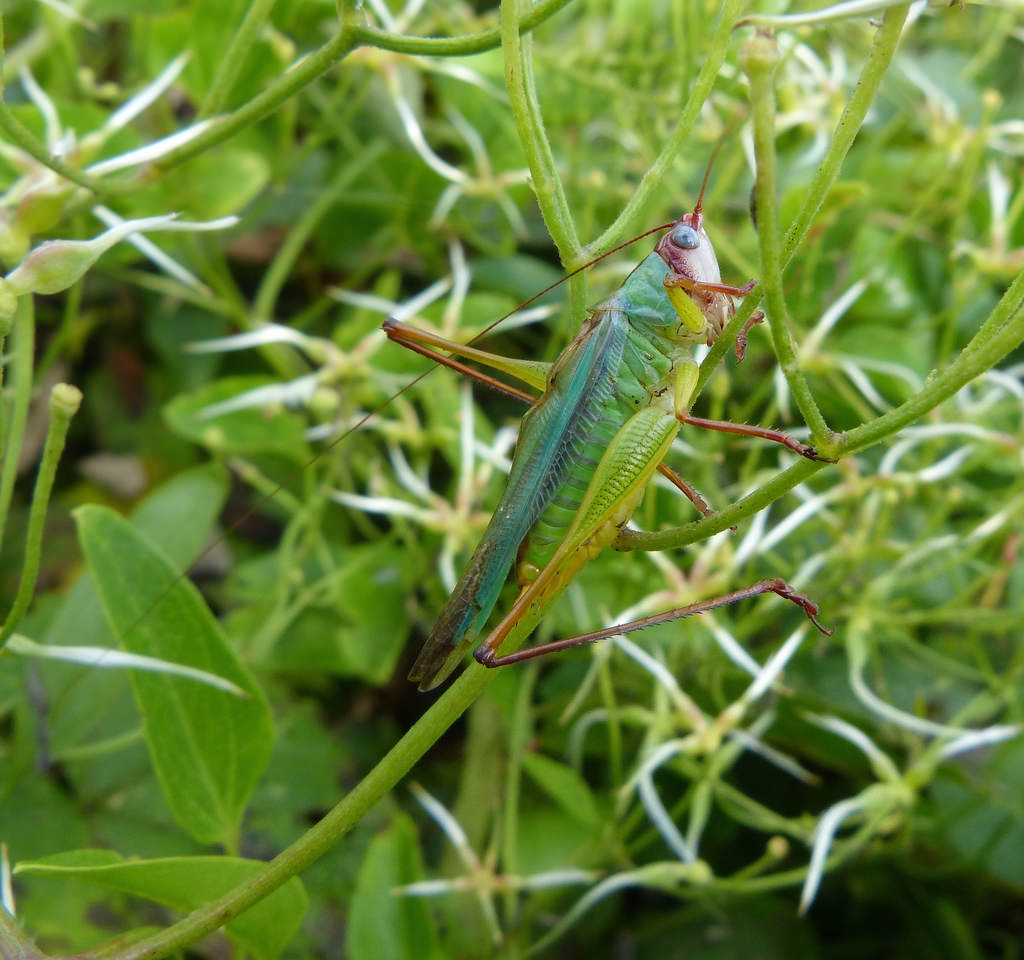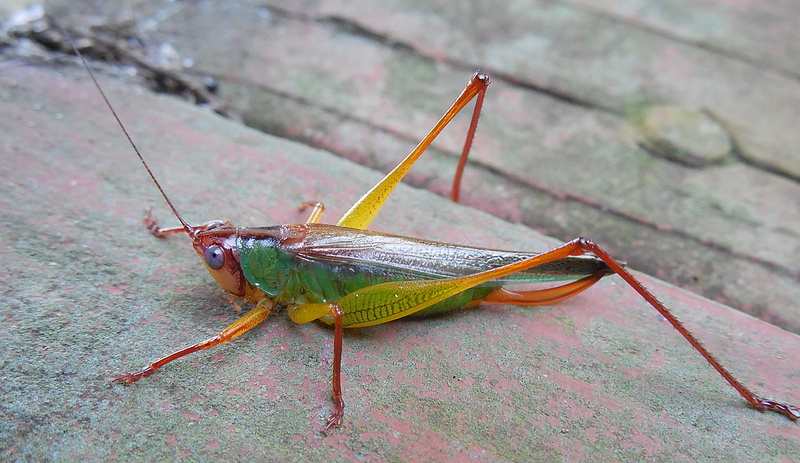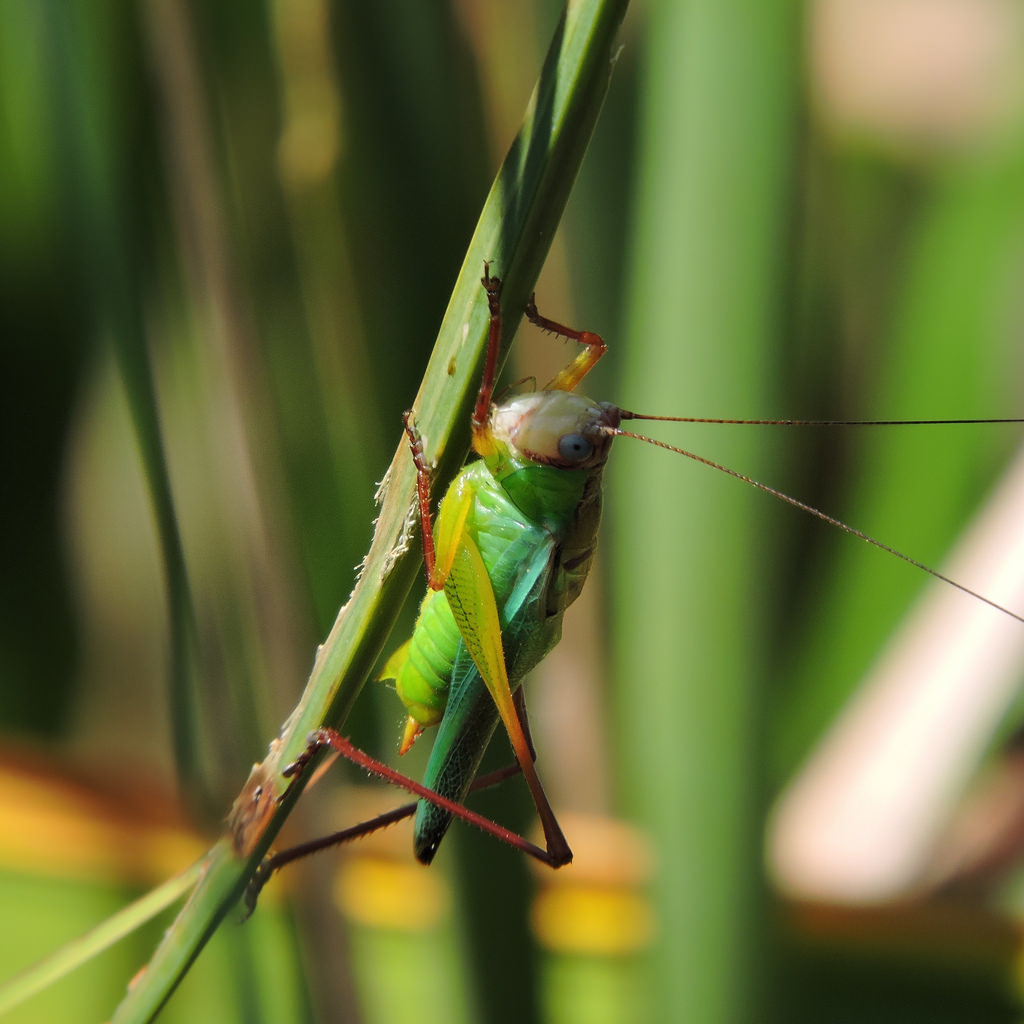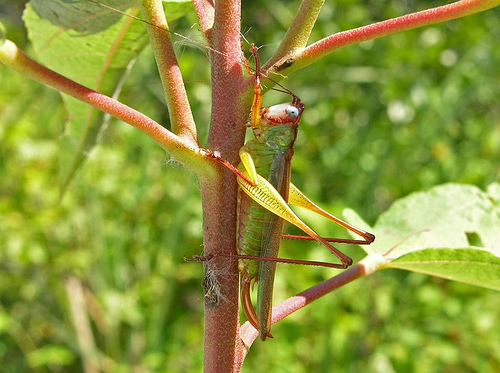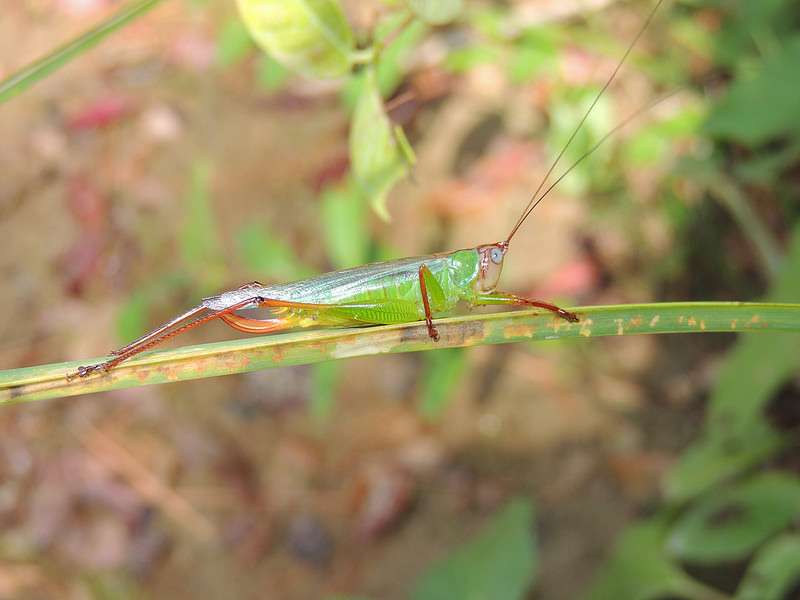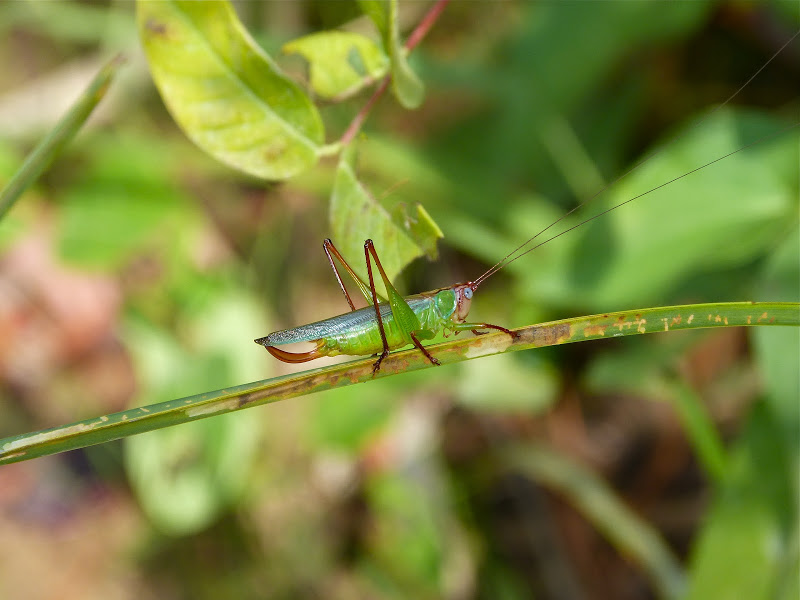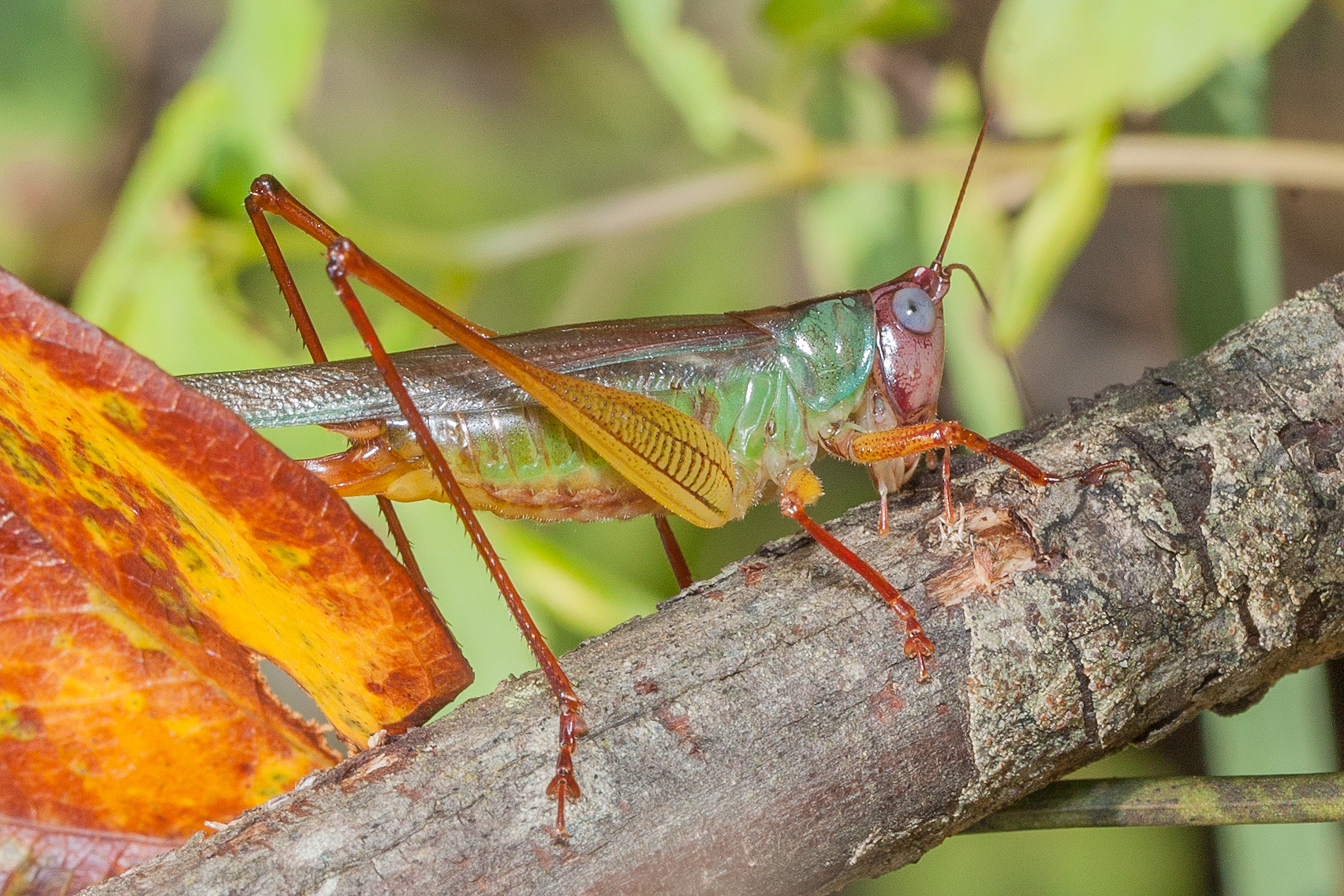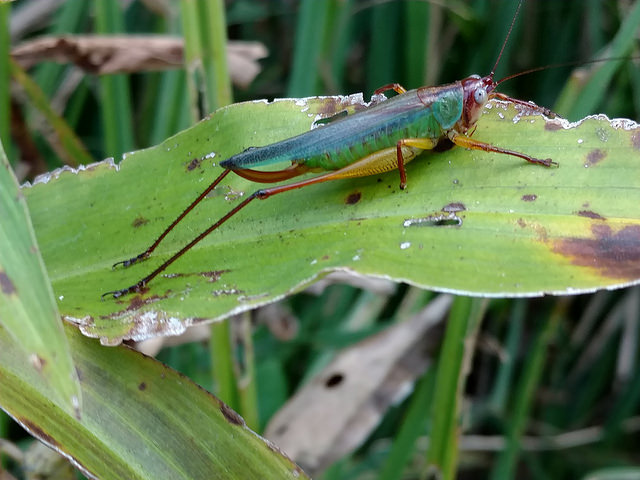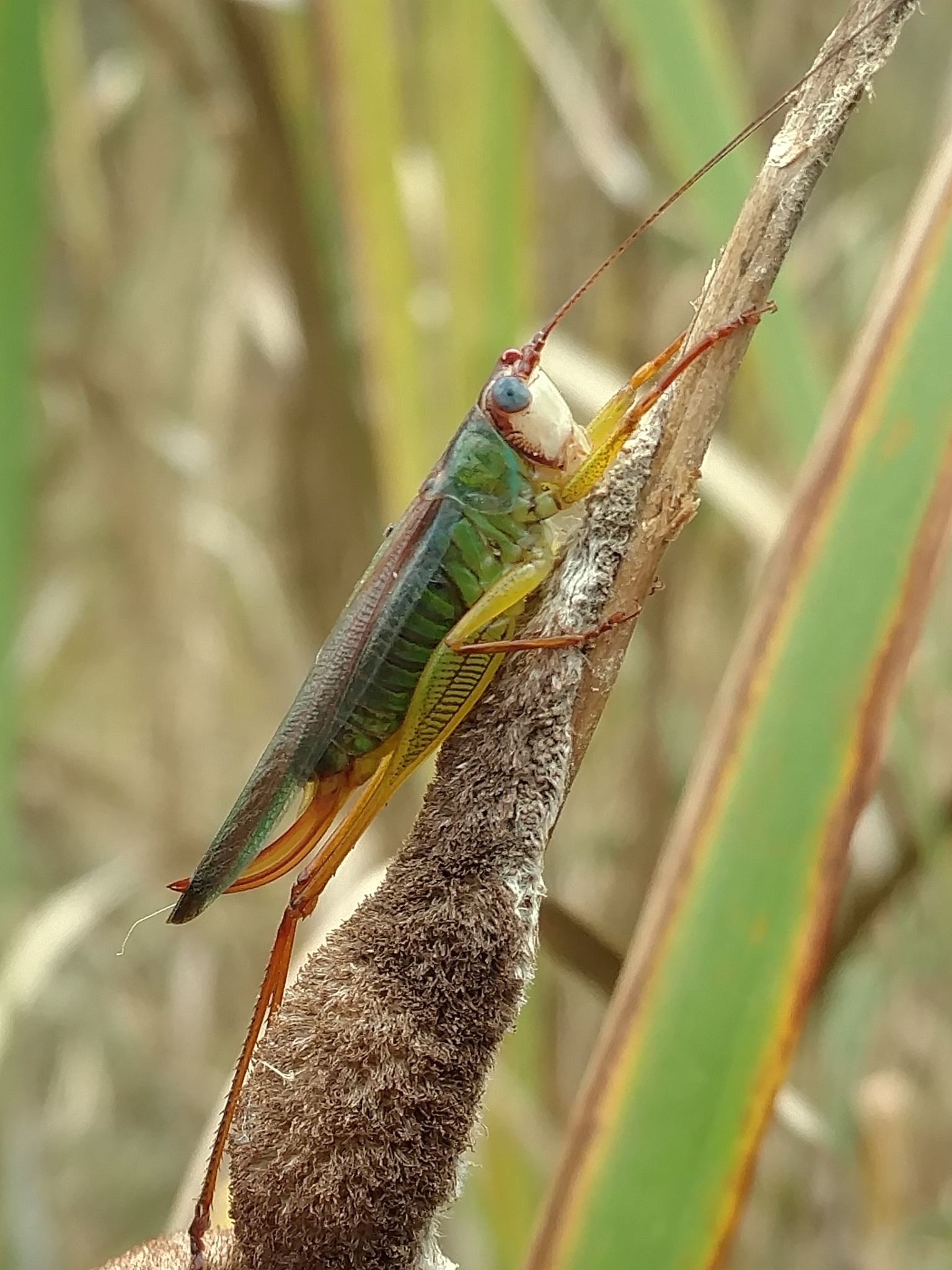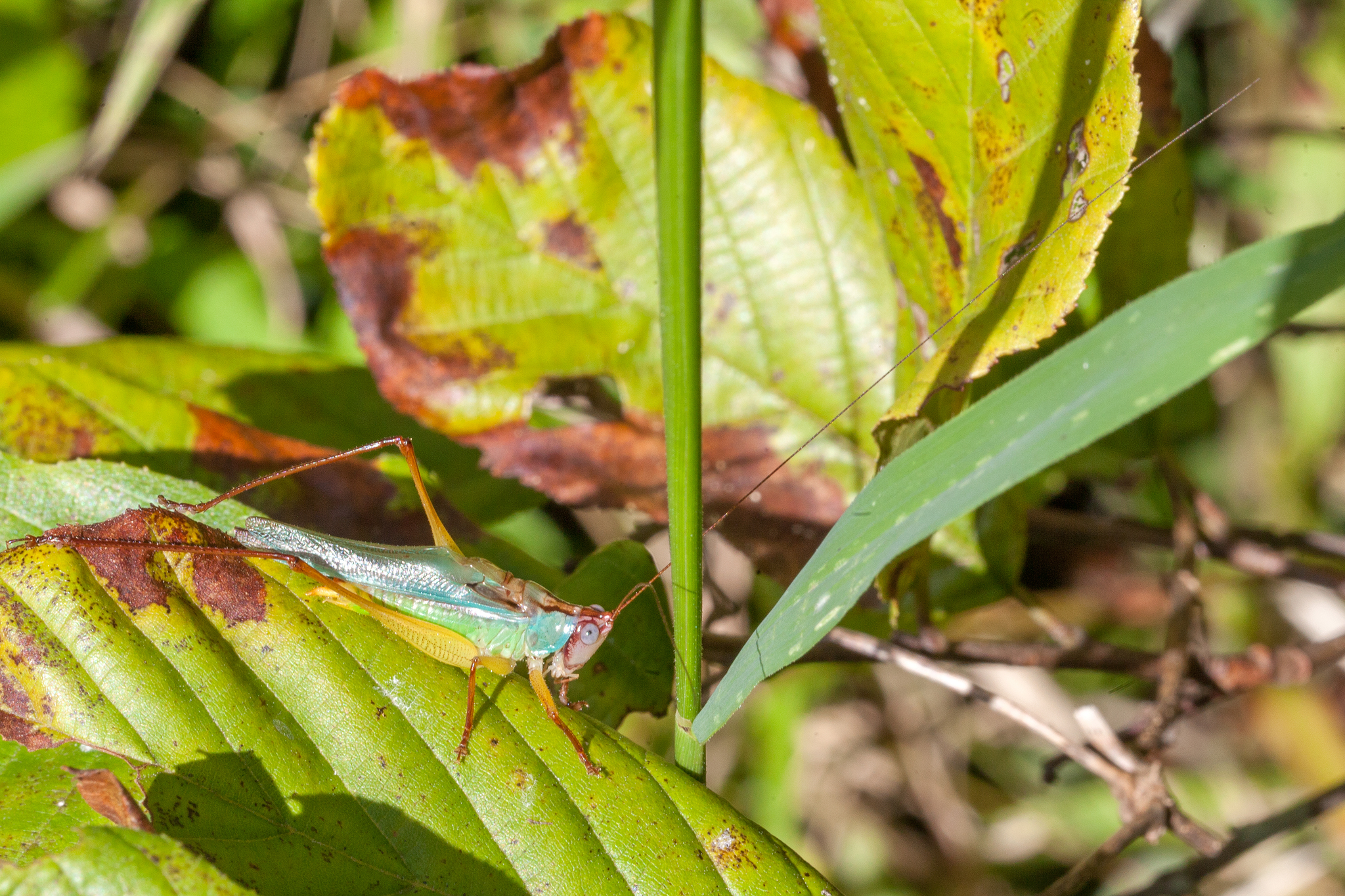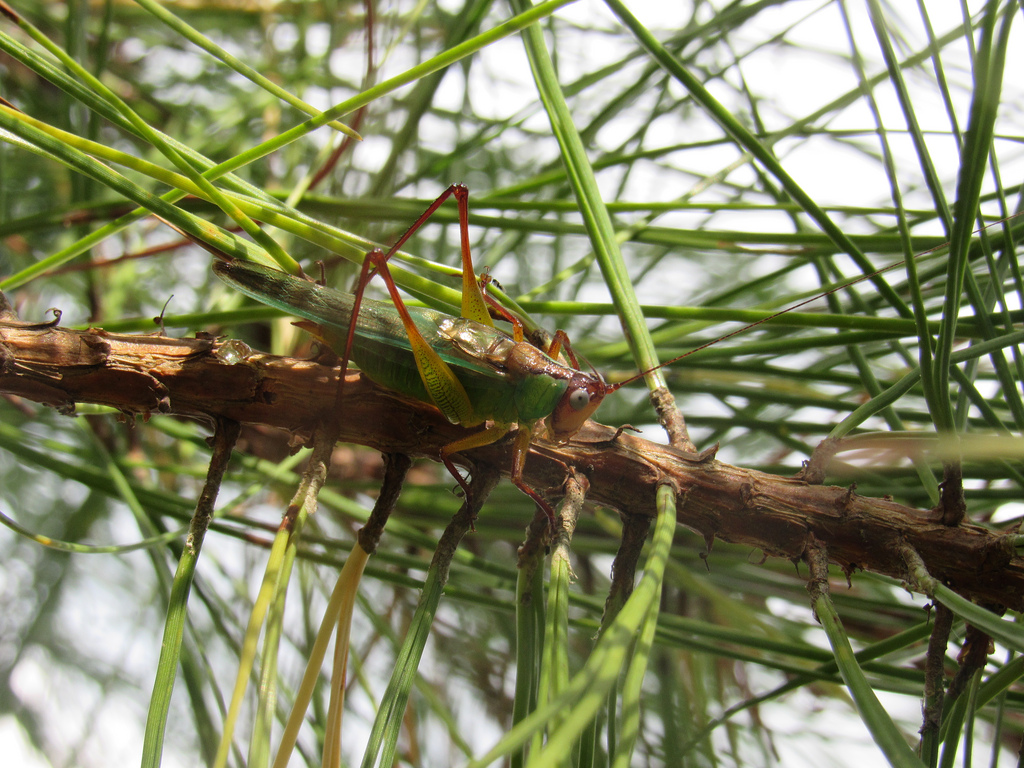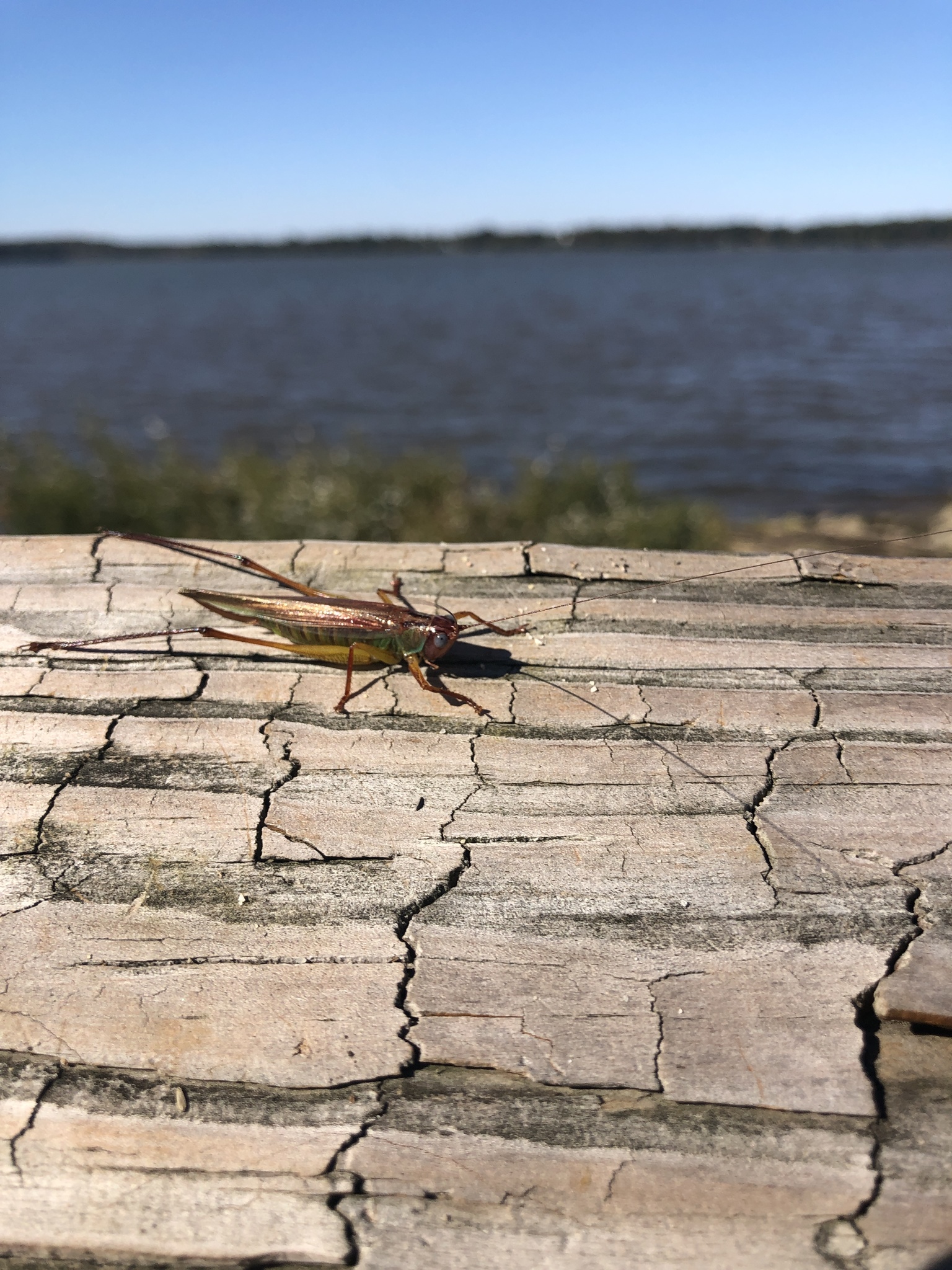Map Snapshot


















120 Records
Handsome Meadow Katydid calling in Dorchester Co., Maryland (9/23/2017). - Jim Brighton.
Status
Very common from late summer through fall on the coastal plain. Appears to be more common along the edges of open freshwater wet areas.
Description
The blue eyes and reddish hind leg coloration is diagnostic for Handsome Meadow Katydid. Similar Black-legged Meadow Katydid has red eyes and dark/black hind legs.
Seasonality Snapshot
Source: Wikipedia
| Orchelimum pulchellum | |
|---|---|

| |
| Scientific classification | |
| Domain: | Eukaryota |
| Kingdom: | Animalia |
| Phylum: | Arthropoda |
| Class: | Insecta |
| Order: | Orthoptera |
| Suborder: | Ensifera |
| Family: | Tettigoniidae |
| Tribe: | Conocephalini |
| Genus: | Orchelimum |
| Species: | O. pulchellum
|
| Binomial name | |
| Orchelimum pulchellum Davis, 1909
| |
Orchelimum pulchellum, the handsome meadow katydid, is a species of meadow katydid in the family Tettigoniidae. It is found in North America.[1][2][3][4]

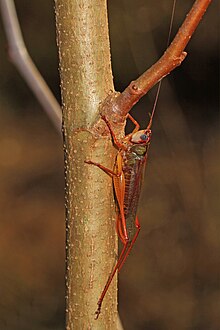
Description
[edit]The body length of the handsome meadow katydid is 18 to 23 millimetres (0.71 to 0.91 in).[5] This katydid is distinguished from Orchelimum nigripes, its western relative, by the shape of the caudal portion of its lateral pronotum, which is arcuate inferior to the humeral sinus in O. pulchellum, while the same portion is sinuate or sub-sinuate in O. nigripes.[6]: 24–25, 27 The medial tooth on each of the paired male cerci in O. pulchellum is positioned at a less acute angle to the sinuate sinus[note 1] of the cercus in O. pulchellum when compared to that of O. nigripes.[6]: 24–25 [8] In females, the ovipositor is long and sickle shaped.[6]: 27 The tibiae are brown in O. pulchellum, while they are typically black in O. nigripes.[6]: 24–25, 27 O. pulchellum typically has no spines on the inner carinae of the hind femora,[6]: 54 which distinguishes it from another relative, O. carinatum.[7] It is distinguished from its Texas relative, O. bullatum, by virtue of its narrower fastigium and by having spines on the outer ventral carinae of the hind femora,[6]: 24–25, 27 generally numbering at least six total when both sides are counted.[7] O. pulchellum commonly has blue compound eyes,[3] a trait it shares with O. erythrocephalum,[9] on its white[3] or yellow[5] face. At rest, its folded wings appear to have a turquoise stripe,[3] while the body is green with reddish marks around the head.[5]
The song of the handsome meadow katydid is very similar to that of Orchelimum nigripes.[10] It consists of a series of paired and occasional single clicks leading into a short buzz.[8]
Distribution
[edit]The handsome meadow katydid is found east of the Appalachian Mountains,[10] as far north as New York state.[3] Its range extends south to Florida and west to Mississippi.[10]
Ecology
[edit]This katydid is found in moist forests and in wetlands.[5] It consumes pollen from flowering plants and foliage.[11] In Alabama, it is active from mid-July until mid-November.[5]
Evolution
[edit]According to Shapiro (1998), zones of hybridization have been established by O. pulchellum and O. nigripes in Mississippi and Alabama and along the Potomac River, near the confluence of the Anacostia River with the Potomac below the fall line.[10]
Notes
[edit]References
[edit]- ^ "Orchelimum pulchellum Report". Integrated Taxonomic Information System. Retrieved 2019-09-24.
- ^ "Orchelimum pulchellum". GBIF. Retrieved 2019-09-24.
- ^ a b c d e Cotinis (16 January 2012). "Orchelimum pulchellum species information". BugGuide.net. Retrieved 7 August 2022.
- ^ Otte, Daniel; Cigliano, Maria Marta; Braun, Holger; Eades, David C. (2019). "species Orchelimum pulchellum Davis, 1909". Orthoptera species file online, Version 5.0. Retrieved 2019-07-02.
- ^ a b c d e Dakin, Jr., Matt E.; Hays, Kirby L. (June 1970). "A Synopsis of Orthoptera (Sensu Lato) of Alabama". Auburn, Alabama: Agricultural Experiment Center, Auburn University. p. 75. Bulletin 404. Retrieved 7 August 2022.
- ^ a b c d e f Rehn, James A. G.; Hebard, Morgan (March 1915). "A Synopsis of the Species of the Genus Orchelimum". Transactions of the American Entomological Society. 41 (1): 11–87. Retrieved 23 September 2023.
- ^ a b c Walker, Thomas J. (1971). "Orchelimum carinatum, a New Meadow Katydid from the Southeastern United States (Orthoptera: Tettigoniidae)". The Florida Entomologist. 54 (4): 277–281. doi:10.2307/3493586.
- ^ a b "Handsome Meadow Katydid". Singing Insects of North America (SINA). Retrieved 7 August 2022.
- ^ Cotinis; Phillip Harpootlian (18 November 2013). "Species Orchelimum erythrocephalum - Red-Headed Meadow Katydid". BugGuide. Retrieved 29 October 2022.
- ^ a b c d Shapiro, Leo H. (1998). "Hybridization and Geographic Variation in Two Meadow Katydid Contact Zones" (PDF). Evolution. 52 (3): 784–796. Retrieved 27 February 2024 – via The Orthopterists' Society.
- ^ Cotinis (31 August 2010). "Genus Orchelimum". BugGuide. Retrieved 8 August 2022.
External links
[edit] Media related to Orchelimum pulchellum at Wikimedia Commons
Media related to Orchelimum pulchellum at Wikimedia Commons

